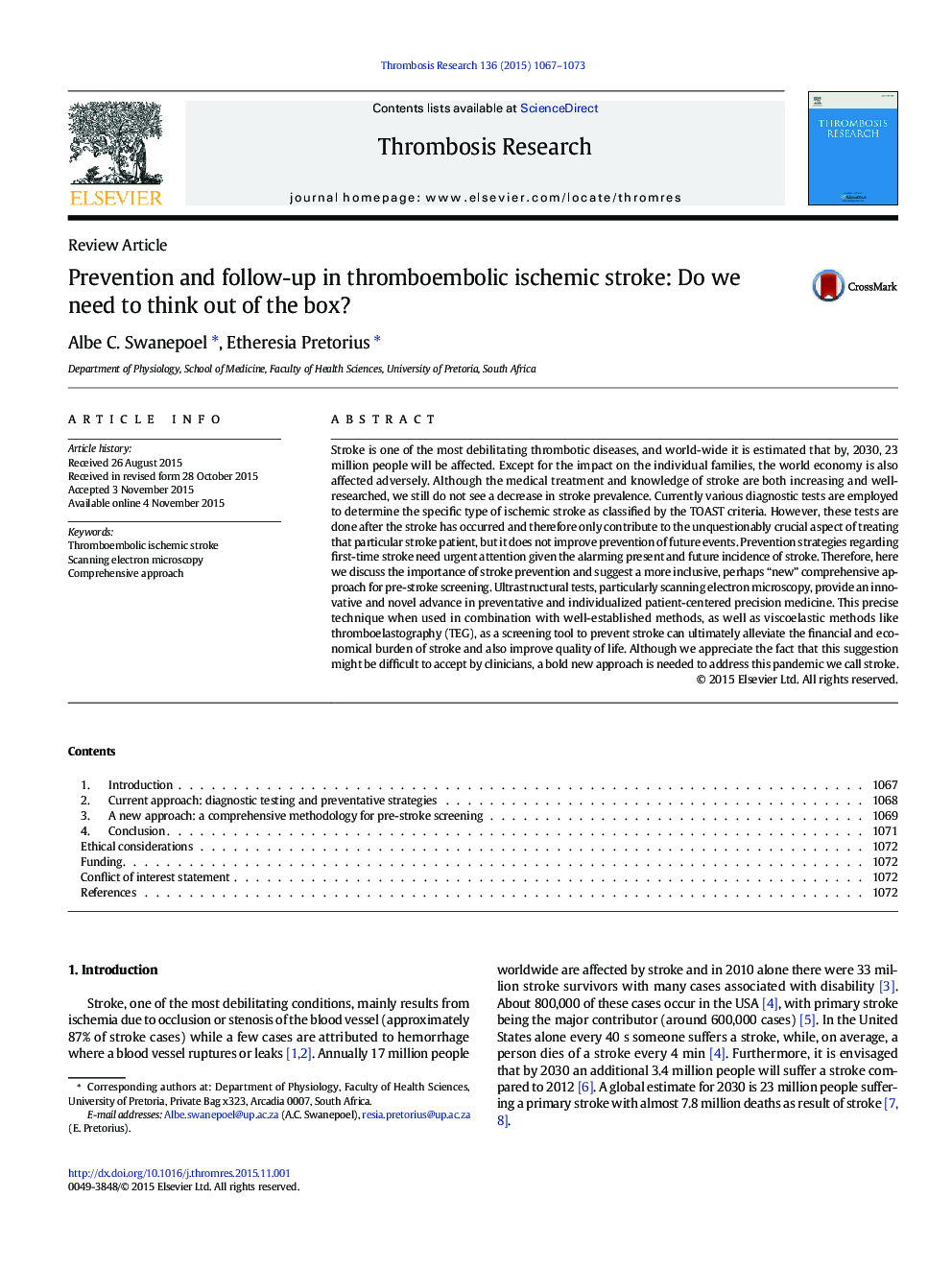| Article ID | Journal | Published Year | Pages | File Type |
|---|---|---|---|---|
| 6000984 | Thrombosis Research | 2015 | 7 Pages |
â¢Diagnostic tests currently employed in stroke management do not improve prevention of future events.â¢We argue that we need a more inclusive and comprehensive approach for pre-stroke screening.â¢Electron microscopy with viscoelastic techniques provide an innovative advance in individualized patient-centred medicine.
Stroke is one of the most debilitating thrombotic diseases, and world-wide it is estimated that by, 2030, 23 million people will be affected. Except for the impact on the individual families, the world economy is also affected adversely. Although the medical treatment and knowledge of stroke are both increasing and well-researched, we still do not see a decrease in stroke prevalence. Currently various diagnostic tests are employed to determine the specific type of ischemic stroke as classified by the TOAST criteria. However, these tests are done after the stroke has occurred and therefore only contribute to the unquestionably crucial aspect of treating that particular stroke patient, but it does not improve prevention of future events. Prevention strategies regarding first-time stroke need urgent attention given the alarming present and future incidence of stroke. Therefore, here we discuss the importance of stroke prevention and suggest a more inclusive, perhaps “new” comprehensive approach for pre-stroke screening. Ultrastructural tests, particularly scanning electron microscopy, provide an innovative and novel advance in preventative and individualized patient-centered precision medicine. This precise technique when used in combination with well-established methods, as well as viscoelastic methods like thromboelastography (TEG), as a screening tool to prevent stroke can ultimately alleviate the financial and economical burden of stroke and also improve quality of life. Although we appreciate the fact that this suggestion might be difficult to accept by clinicians, a bold new approach is needed to address this pandemic we call stroke.
